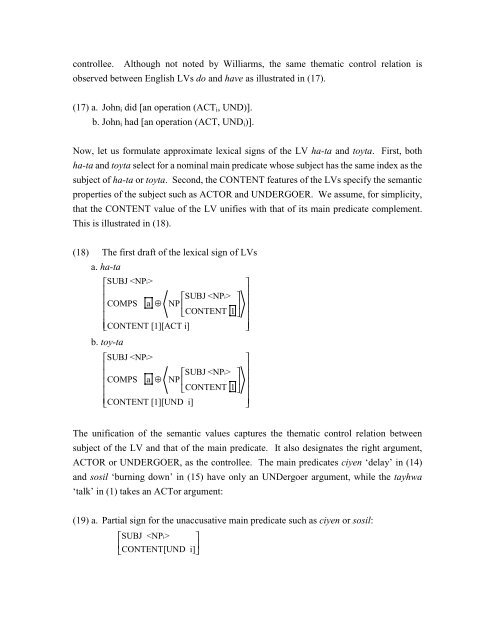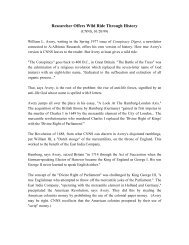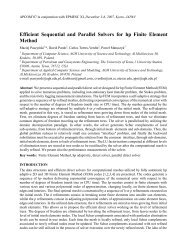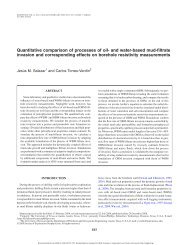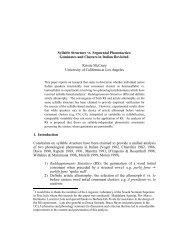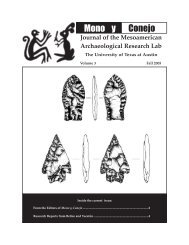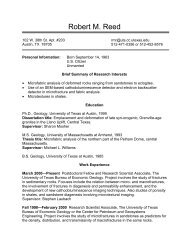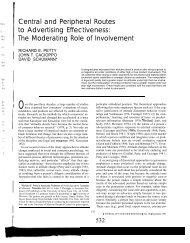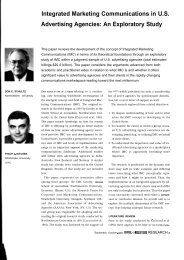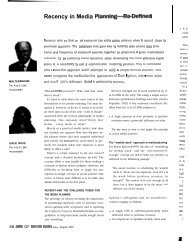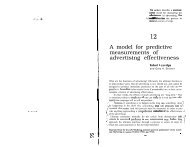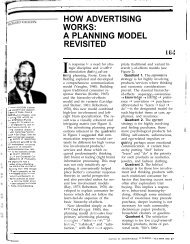Mixed Categories and Argument Transfer in the Korean Light Verb ...
Mixed Categories and Argument Transfer in the Korean Light Verb ...
Mixed Categories and Argument Transfer in the Korean Light Verb ...
You also want an ePaper? Increase the reach of your titles
YUMPU automatically turns print PDFs into web optimized ePapers that Google loves.
controllee. Although not noted by Williarms, <strong>the</strong> same <strong>the</strong>matic control relation is<br />
observed between English LVs do <strong>and</strong> have as illustrated <strong>in</strong> (17).<br />
(17) a. Johni did [an operation (ACTi, UND)].<br />
b. Johni had [an operation (ACT, UNDi)].<br />
Now, let us formulate approximate lexical signs of <strong>the</strong> LV ha-ta <strong>and</strong> toyta. First, both<br />
ha-ta <strong>and</strong> toyta select for a nom<strong>in</strong>al ma<strong>in</strong> predicate whose subject has <strong>the</strong> same <strong>in</strong>dex as <strong>the</strong><br />
subject of ha-ta or toyta. Second, <strong>the</strong> CONTENT features of <strong>the</strong> LVs specify <strong>the</strong> semantic<br />
properties of <strong>the</strong> subject such as ACTOR <strong>and</strong> UNDERGOER. We assume, for simplicity,<br />
that <strong>the</strong> CONTENT value of <strong>the</strong> LV unifies with that of its ma<strong>in</strong> predicate complement.<br />
This is illustrated <strong>in</strong> (18).<br />
(18) The first draft of <strong>the</strong> lexical sign of LVs<br />
a. ha-ta<br />
⎡SUBJ <br />
⎢<br />
SUBJ ⎤<br />
COMPS a ⊕ NP<br />
⎢ ⎢ ⎥<br />
CONTENT 1<br />
⎢ ⎣ ⎦<br />
⎢⎣CONTENT [1][ACT i]<br />
⎤<br />
⎥<br />
⎥<br />
⎥<br />
⎥<br />
⎥⎦<br />
b. toy-ta<br />
⎡SUBJ <br />
⎤<br />
⎢ ⎥<br />
SUBJ ⎤ ⎥<br />
⎢<br />
COMPS a ⊕ NP ⎢ ⎥<br />
CONTENT 1<br />
⎥<br />
⎢ ⎣ ⎦ ⎥<br />
⎢<br />
⎣CONTENT [1][UND i]<br />
⎥<br />
⎦<br />
The unification of <strong>the</strong> semantic values captures <strong>the</strong> <strong>the</strong>matic control relation between<br />
subject of <strong>the</strong> LV <strong>and</strong> that of <strong>the</strong> ma<strong>in</strong> predicate. It also designates <strong>the</strong> right argument,<br />
ACTOR or UNDERGOER, as <strong>the</strong> controllee. The ma<strong>in</strong> predicates ciyen ‘delay’ <strong>in</strong> (14)<br />
<strong>and</strong> sosil ‘burn<strong>in</strong>g down’ <strong>in</strong> (15) have only an UNDergoer argument, while <strong>the</strong> tayhwa<br />
‘talk’ <strong>in</strong> (1) takes an ACTor argument:<br />
(19) a. Partial sign for <strong>the</strong> unaccusative ma<strong>in</strong> predicate such as ciyen or sosil:<br />
⎡SUBJ <br />
⎤<br />
⎢<br />
CONTENT[UND i]<br />
⎥<br />
⎣ ⎦


